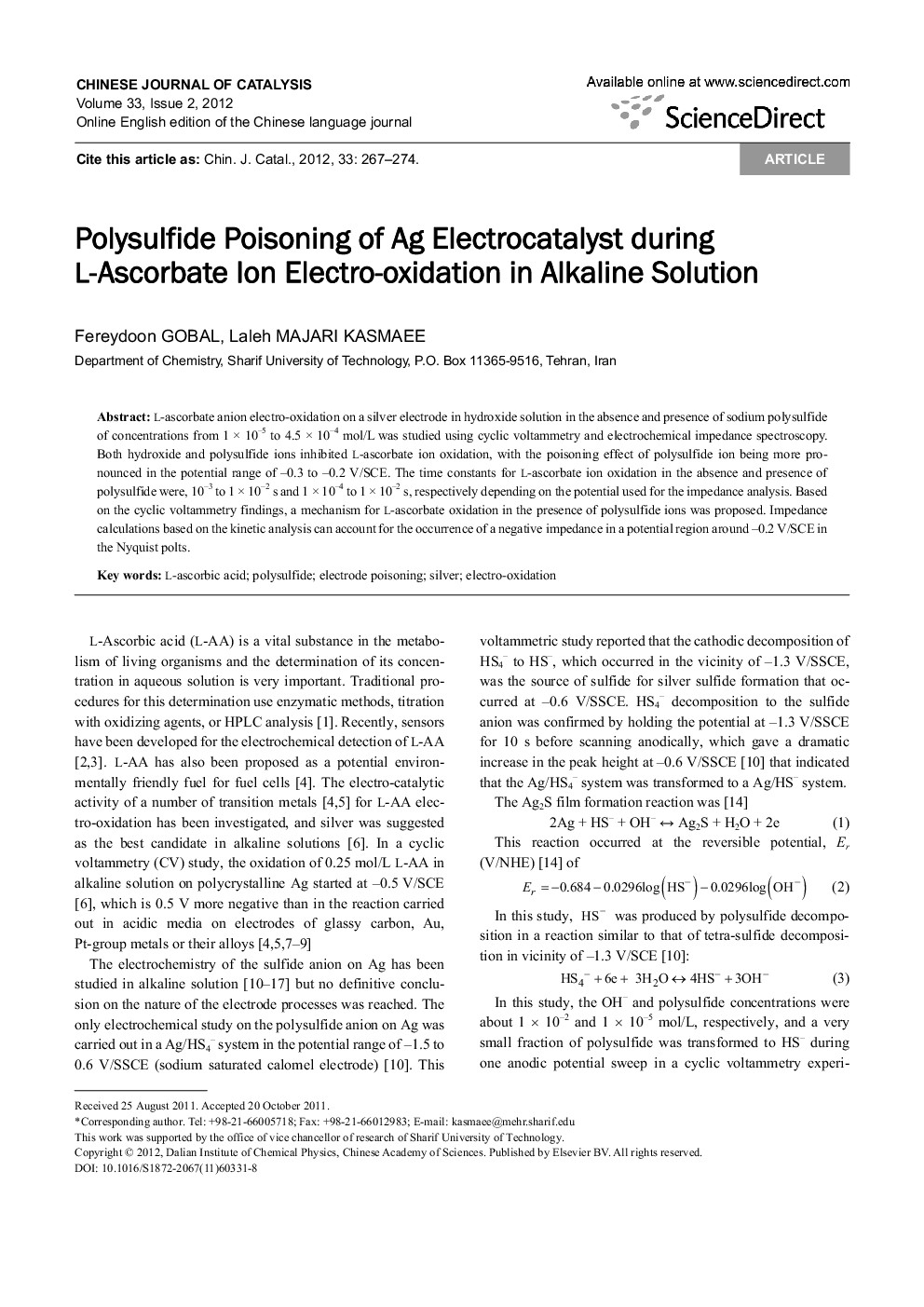| Article ID | Journal | Published Year | Pages | File Type |
|---|---|---|---|---|
| 60181 | Chinese Journal of Catalysis | 2012 | 8 Pages |
L-ascorbate anion electro-oxidation on a silver electrode in hydroxide solution in the absence and presence of sodium polysulfide of concentrations from 1 × 10−5 to 4.5 × 10−4 mol/L was studied using cyclic voltammetry and electrochemical impedance spectroscopy. Both hydroxide and polysulfide ions inhibited L-ascorbate ion oxidation, with the poisoning effect of polysulfide ion being more pronounced in the potential range of −0.3 to −0.2 V/SCE. The time constants for L-ascorbate ion oxidation in the absence and presence of polysulfide were, 10−3 to 1 × 10−2 s and 1 × 10−4 to 1 × 10−2 s, respectively depending on the potential used for the impedance analysis. Based on the cyclic voltammetry findings, a mechanism for L-ascorbate oxidation in the presence of polysulfide ions was proposed. Impedance calculations based on the kinetic analysis can account for the occurrence of a negative impedance in a potential region around −0.2 V/SCE in the Nyquist polts.
Graphical abstractThe electro-catalytic oxidation of L-ascorbate ion on a Ag electrode in the presence of adsorbed hydroxide and poly sulfide anions was investigated using electrochemical methods. Both hydroxide and polysulfide ions inhibited L-ascorbate ion oxidation, with the poisoning effect of polysulfide ion being more pronounced in the potential range of −0.3 to −0.2 V/SCE.Figure optionsDownload full-size imageDownload as PowerPoint slide
